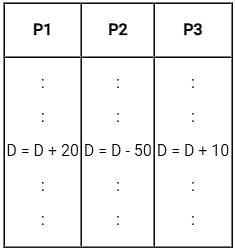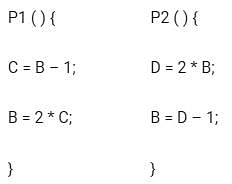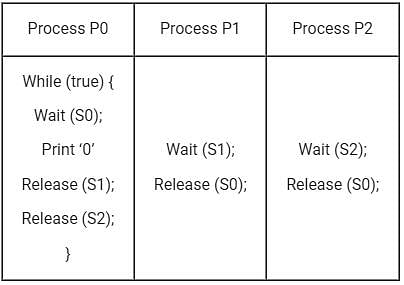Test: Concurrency & Synchronization - Computer Science Engineering (CSE) MCQ
10 Questions MCQ Test Operating System - Test: Concurrency & Synchronization
Implementation of ________ may waste CPU cycles.
Busy Waiting in process synchronisation is a term used when a process is in critical section and other processes are waiting to enter critical section. Busy Waiting is also called ___________
| 1 Crore+ students have signed up on EduRev. Have you? Download the App |
Consider three concurrent processes P1, P2 and P3 as shown below, which access a shared variable D that has been initialized to 100.

The processes are executed on a uniprocessor system running a time-shared operating system. If the minimum and maximum possible values of D after the three processes have completed execution are X and Y respectively, then the value of Y - X is __________.

At a particular time of computation the value of a counting semaphore is 7. Then 20 P operations and 15 V operation were completed on this semaphore. The resulting value of the semaphore is
Which of the following is not an optimization criterion in the design of a CPU scheduling algorithm?
The following two functions P1 and P2 that share a variable B with an initial value of 2 execute concurrently.

The number of distinct values that B can possibly take after the execution is __________.
Consider a counting Semaphore variable 'S'. Following are the semaphore operations performed: 18P, 3V, 7V, 2P, 6V. What can be the largest initial value of S to keep one process in suspended list?
The following program consists of 3 concurrent processes and 3 binary semaphores. The semaphores are initialized as S0 = 1, S1 = 0, S2 = 0.

How many times will process P0 print ‘0’?
Two atomic operations permissible on Semaphores are __________ and __________.
|
10 videos|99 docs|33 tests
|
|
10 videos|99 docs|33 tests
|

















